Directory:
Tags:
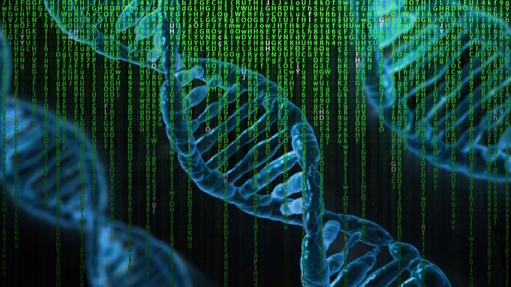
- Prime editing devised by researchers at the Broad Institute led by David Liu is a significant advance of the original CRISPR gene editing tool discovered in 2012
- CRISPR can cut and edit your DNA to correct defects inside your body’s cells to prevent and heal a range of incurable diseases and has revolutionized biomedicine
- The original CRISPR is fraught with inaccuracies referred to as off target effects
- Prime editing substantially reduces CRISPR’s off target effects and has the potential to correct up to 89% of known disease-causing genetic variations
- CRISPR also has the capacity to edit genes in an embryo in such a way that the change is heritable
- In 2018 Chinese researcher He Jiankui “created” the world’s first CRISPR babies
- This triggered international criticism from scientists and bioethicists
- A principal concern is that CRISPR is easy-to-use, cheap, regularly used in thousands of laboratories throughout the world and there is no internationally agreed and enforceable regulatory framework for its use
For better or worse we all now live in CRISPR’s world
In 2012 the world of biomedicine changed when a revolutionary gene editing technology known as CRISPR-Cas9 (an acronym for Clustered Regularly Interspaced Short Palindromic Repeats) was discovered. The technology harnesses your body’s naturally occurring immune system that bacteria use to fight-off viruses and has the potential to forever change the fundamental nature of humanity. Since its discovery CRISPR has been developing at lightning speed primarily because it is simple and affordable and today is used in thousands of laboratories throughout the world.
In this Commentary
In this Commentary we describe prime editing, which is the latest advance of the CRISPR's tool box, devised bya team of researchers, led by Andrew Anzalone, a Jane Coffin Childs postdoctoral fellow from the Broad Institute of MIT and Harvard and published in the October 2019 edition of Nature. Prime editing is significant because it provides a means to eliminate the unintentional consequences of CRISPR and therefore bring the technique closer for use in clinics. But this is still a long way off.
We also review a case where an ambitious scientist “created” the first CRISPR babies. This immediately triggered international criticism and a call for tighter regulatory control of the technology. Scientists and bioethicists are concerned that CRISPR can easily be used to create heritable DNA changes, which ultimately could lead to ‘designer babies’.
These two accounts of CRISPR might seem “opposites” and not sit well together in a single Commentary. Notwithstanding, what prompted putting them together was John Travis, the News Managing Editor of the well-known scientific journal Science, who soon after CRISPR’s discovery in 2012 said, “For better or worse we all now live in CRISPR’s world”.
CRISPR and your DNA
CRISPR is different to traditional gene therapy, which uses viruses to insert new genes into cells to try and treat diseases and has caused some safety challenges. CRISPR, which avoids the use of viruses, was conceived in 2007 when a yogurt company identified an unexpected defence mechanism that its bacteria used to fight off viruses. Subsequent research made a surprising observation that bacteria could remember viruses. CRISPR has been likened to a pair of microscopic scissors that can cut and edit your DNA to correct defects inside your body’s cells to prevent and heal a range of intractable diseases. The standard picture of DNA is a double helix, which looks similar to a ladder that has been twisted. The steps in this twisted ladder are DNA base pairs. The fundamental building blocks of DNA are the four bases adenine (A), cytosine (C), guanine (G) and thymine (T). They are commonly known by their respective letters, A, C, G and T. Three billion of these letters form the complete manual for building and maintaining your body, but tiny errors can cause disease. For example, a mutation that turned one specific A into a T results in the most common form of sickle cell disease.
We also review a case where an ambitious scientist “created” the first CRISPR babies. This immediately triggered international criticism and a call for tighter regulatory control of the technology. Scientists and bioethicists are concerned that CRISPR can easily be used to create heritable DNA changes, which ultimately could lead to ‘designer babies’.
These two accounts of CRISPR might seem “opposites” and not sit well together in a single Commentary. Notwithstanding, what prompted putting them together was John Travis, the News Managing Editor of the well-known scientific journal Science, who soon after CRISPR’s discovery in 2012 said, “For better or worse we all now live in CRISPR’s world”.
CRISPR and your DNA
CRISPR is different to traditional gene therapy, which uses viruses to insert new genes into cells to try and treat diseases and has caused some safety challenges. CRISPR, which avoids the use of viruses, was conceived in 2007 when a yogurt company identified an unexpected defence mechanism that its bacteria used to fight off viruses. Subsequent research made a surprising observation that bacteria could remember viruses. CRISPR has been likened to a pair of microscopic scissors that can cut and edit your DNA to correct defects inside your body’s cells to prevent and heal a range of intractable diseases. The standard picture of DNA is a double helix, which looks similar to a ladder that has been twisted. The steps in this twisted ladder are DNA base pairs. The fundamental building blocks of DNA are the four bases adenine (A), cytosine (C), guanine (G) and thymine (T). They are commonly known by their respective letters, A, C, G and T. Three billion of these letters form the complete manual for building and maintaining your body, but tiny errors can cause disease. For example, a mutation that turned one specific A into a T results in the most common form of sickle cell disease.
The original CRISPR
The original CRISPR tool, which is the first and most popular gene editing system, uses a guide RNA (principally a messenger carrying instructions from your DNA for controlling the synthesis of proteins) to locate a mutated gene plus an enzyme, like Cas9, to cut the double-stranded gene helix and create space for functioning genes to be inserted. However, a concern about CRISPR is that the editing could go awry and cause unintended changes in DNA that could trigger health problems. Findings of a study published in the July 2018 edition of the journal Nature Biotechnology found that such inaccuracies, referred to as off-target effects, were substantially higher than originally reported and some were thought to silence genes that should be active and activate genes that should be silent. These off-target effects, such as random insertions, deletions, translocations, or other base-to-base conversions, pose significant challenges for developing policy associated with the technology.
Subsequently however, the paper was retracted, and an error correction was posted on a scientific website. Contrary to their original findings, the authors of the Nature Biotechnology paper restated that the CRISPR-Cas9 gene editing approach, "can precisely edit the genome at the organismal level and may not introduce numerous, unintended, off-target mutations".
Notwithstanding, researchers remained concerned about CRISPR’s off target effects and several devised a technique, referred to as base editing, to reduce these. Base editing is described in three research papers published in 2017: one in the November edition of the journal ‘Protein and Cell’, another in the October edition of ‘Science’ the and a third by researchers from the Broad Institute, in the October edition of the journal ‘Nature’. Base editing takes the original CRISPR-Cas9 and fuses it to proteins that can make four precise DNA changes: it can change the letters C-to-T, T-to-C, A-to-G and G-to-A. The technique genetically transforms base pairs at a target position in the genome of living cells with more than 50% efficiency and virtually no detectable off-target effects. Despite its success, there remained other types of point mutations that scientists wanted to target for diseases.
Subsequently however, the paper was retracted, and an error correction was posted on a scientific website. Contrary to their original findings, the authors of the Nature Biotechnology paper restated that the CRISPR-Cas9 gene editing approach, "can precisely edit the genome at the organismal level and may not introduce numerous, unintended, off-target mutations".
Base editing
Notwithstanding, researchers remained concerned about CRISPR’s off target effects and several devised a technique, referred to as base editing, to reduce these. Base editing is described in three research papers published in 2017: one in the November edition of the journal ‘Protein and Cell’, another in the October edition of ‘Science’ the and a third by researchers from the Broad Institute, in the October edition of the journal ‘Nature’. Base editing takes the original CRISPR-Cas9 and fuses it to proteins that can make four precise DNA changes: it can change the letters C-to-T, T-to-C, A-to-G and G-to-A. The technique genetically transforms base pairs at a target position in the genome of living cells with more than 50% efficiency and virtually no detectable off-target effects. Despite its success, there remained other types of point mutations that scientists wanted to target for diseases.
|
|
|
|
Directory:
Tags:
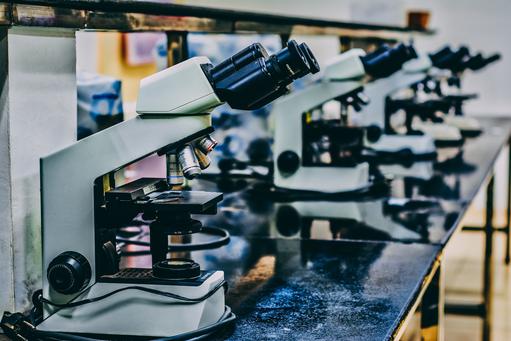
|
|
|
Directory:
Tags:
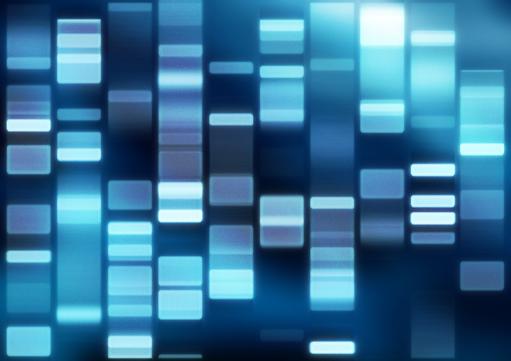
|
|
|
Directory:
Tags:
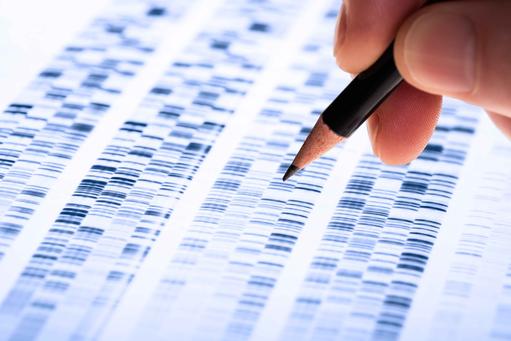
- Many people still view China as a ‘copycat’ economy, but this is rapidly changing
- China is:
- Pursuing a multi-billion dollar-15 year strategy to become a world leader in genomic engineering and personalized medicine
- Systematically upgrading and incentivizing its large and growing pool of scientists who are making important breakthroughs in the life sciences
- Empowering and encouraging state owned and private life science companies to own and control the capacity to transform genomic, clinical and personal data into personalized medicines
- The difference in national approaches to individualism and privacy confers an added competitive advantage to China and its life science ambitions
- China’s approach to individualism and privacy issues could have implications for society
The global competition to translate genomic data into personal medical therapies
PART 2
China is no longer a low cost ‘copycat’ economy. Indeed, it has bold plans to become a preeminent global force in genomic engineering to prevent and manage devastating and costly diseases. Here we briefly describe aspects of China’s multibillion-dollar, government-backed initiative, to own and control significant capacity to transform genomic data into precision medicines. This is not only a ‘numbers’ game. China’s drive to achieve its life science ambitions is also advantaged by a different approach to ‘individualism’ and privacy compared to that of the US; and this could have far-reaching implications for future civilizations.
Uneven playing field
Genomic engineering and precision medicine have the potential to revolutionize how we prevent and treat intractable diseases. Who owns the intellectual property associated with genomic engineering, and who first exploits it, will reap significant commercial benefits in the future. However, genomic technologies are not like any other. This is because genetically modifying human genomes could trigger genetic changes across future generations. Misuse of such technologies therefore could result in serious harm for individuals and their families. On the other hand, over regulation of genomic engineering could slow or even derail the prevention and treatment of devastating and costly diseases. Establishing a balance, which supports measures to mitigate misuse of genomic technologies while allowing the advancement of precision medicine is critical. However, this has proven difficult to establish internationally.
Chinese scientists have crossed an ethical line
Chinese culture interprets individualism and privacy differently to American culture, and therefore China responds differently to certain ethical standards compared to the US and some other Western nations. Indeed, national differences were ignited in 2012 when Chinese researchers published their findings of the world’s first endeavors to modify the genomes of human embryos to confer genetic resistance to certain diseases. Because such modifications are heritable critics argued that the Chinese scientists crossed a significant ethical line, and this was the start of a “slippery slope”, which could eventually lead to the creation of a two-tiered society, with elite citizens genetically engineered to be smarter, healthier and to live longer, and an underclass of biologically run-of-the-mill human beings.
International code of conduct called for but not adhered to
2 prominent scientific journals, Nature and Science, rejected the Chinese research papers reporting world-first scientific breakthroughs on ethical grounds. Subsequently, Nature published a note calling for a global moratorium on the genetic modification of human embryos, suggesting that there are “grave concerns” about the ethics and safety of the technology. 40 countries have banned genetically modifying human embryos. In 2016, a report from the UK’s Nuffield Council on Bioethics stressed the importance of an internationally agreed ethical code of conduct before genomic engineering develops further.
In 2017 an influential US science advisory group formed by the National Academy of Sciences and the National Academy of Medicine gave ‘lukewarm’ support to the modification of human embryos to prevent, “serious diseases and disabilities” in cases only where there are no other “reasonable alternatives”. The French oppose genomic modification, the Dutch and the Swedes support it, and a recent Nature editorial suggested that the EU is, “habitually paralyzed whenever genetic modification is discussed”. In the meantime, clinical studies, which involve genomic engineering, are advancing at a pace in China.
With regard to genome testing, western human rights activists have warned that China is targeting vulnerable groups and minorities to help build vast genomic databases without appropriate protection for individuals. Those include migrant workers, political dissidents and ethnic or religious minorities such as the Muslim Uighurs in China's far western Xinjiang region. Xinjiang authorities are reported to have invested some US$10bn in advanced sequencing equipment to enhance the collection and indexing of these data.
Different national interpretations of ‘individualism’
‘Individualism’, which is at the core of ethical considerations of genomic engineering, is challenging to define because of its different cultural, political and social interpretations. For example, following the French Revolution, individualisme was used pejoratively in France to signify the sources of social dissolution and anarchy, and the elevation of individual interests above those of the collective. The contemporary Chinese interpretation of individualism is similar to the early 19th century French interpretation. It does not stress a person’s uniqueness and separation from the State, but emphasizes an individual’s social; contract and harmony with the State. By contrast, American individualism is perceived as an inalienable natural right of all citizens, and independent of the State.
Further, American individuals are actively encouraged to challenge and influence the government and its regulatory bodies, whereas in China citizens are expected to unquestionably support the State. China is a one party state, where individuals generally accept that their government and its leaders represent their higher interests, and most citizens therefore accept the fact that they are not expected to challenge and influence policies determined by the State and its leaders. This difference provides China with a significant competitive advantage in its endeavors to become a world leader in the life sciences,
Uneven playing field
Genomic engineering and precision medicine have the potential to revolutionize how we prevent and treat intractable diseases. Who owns the intellectual property associated with genomic engineering, and who first exploits it, will reap significant commercial benefits in the future. However, genomic technologies are not like any other. This is because genetically modifying human genomes could trigger genetic changes across future generations. Misuse of such technologies therefore could result in serious harm for individuals and their families. On the other hand, over regulation of genomic engineering could slow or even derail the prevention and treatment of devastating and costly diseases. Establishing a balance, which supports measures to mitigate misuse of genomic technologies while allowing the advancement of precision medicine is critical. However, this has proven difficult to establish internationally.
Chinese scientists have crossed an ethical line
Chinese culture interprets individualism and privacy differently to American culture, and therefore China responds differently to certain ethical standards compared to the US and some other Western nations. Indeed, national differences were ignited in 2012 when Chinese researchers published their findings of the world’s first endeavors to modify the genomes of human embryos to confer genetic resistance to certain diseases. Because such modifications are heritable critics argued that the Chinese scientists crossed a significant ethical line, and this was the start of a “slippery slope”, which could eventually lead to the creation of a two-tiered society, with elite citizens genetically engineered to be smarter, healthier and to live longer, and an underclass of biologically run-of-the-mill human beings.
International code of conduct called for but not adhered to
2 prominent scientific journals, Nature and Science, rejected the Chinese research papers reporting world-first scientific breakthroughs on ethical grounds. Subsequently, Nature published a note calling for a global moratorium on the genetic modification of human embryos, suggesting that there are “grave concerns” about the ethics and safety of the technology. 40 countries have banned genetically modifying human embryos. In 2016, a report from the UK’s Nuffield Council on Bioethics stressed the importance of an internationally agreed ethical code of conduct before genomic engineering develops further.
In 2017 an influential US science advisory group formed by the National Academy of Sciences and the National Academy of Medicine gave ‘lukewarm’ support to the modification of human embryos to prevent, “serious diseases and disabilities” in cases only where there are no other “reasonable alternatives”. The French oppose genomic modification, the Dutch and the Swedes support it, and a recent Nature editorial suggested that the EU is, “habitually paralyzed whenever genetic modification is discussed”. In the meantime, clinical studies, which involve genomic engineering, are advancing at a pace in China.
With regard to genome testing, western human rights activists have warned that China is targeting vulnerable groups and minorities to help build vast genomic databases without appropriate protection for individuals. Those include migrant workers, political dissidents and ethnic or religious minorities such as the Muslim Uighurs in China's far western Xinjiang region. Xinjiang authorities are reported to have invested some US$10bn in advanced sequencing equipment to enhance the collection and indexing of these data.
Different national interpretations of ‘individualism’
‘Individualism’, which is at the core of ethical considerations of genomic engineering, is challenging to define because of its different cultural, political and social interpretations. For example, following the French Revolution, individualisme was used pejoratively in France to signify the sources of social dissolution and anarchy, and the elevation of individual interests above those of the collective. The contemporary Chinese interpretation of individualism is similar to the early 19th century French interpretation. It does not stress a person’s uniqueness and separation from the State, but emphasizes an individual’s social; contract and harmony with the State. By contrast, American individualism is perceived as an inalienable natural right of all citizens, and independent of the State.
Further, American individuals are actively encouraged to challenge and influence the government and its regulatory bodies, whereas in China citizens are expected to unquestionably support the State. China is a one party state, where individuals generally accept that their government and its leaders represent their higher interests, and most citizens therefore accept the fact that they are not expected to challenge and influence policies determined by the State and its leaders. This difference provides China with a significant competitive advantage in its endeavors to become a world leader in the life sciences,
Human capital
By 2025, some 2bn human genomes could be sequenced. This not only presents ethical challenges, but also significant human capital challenges. The development of personalized medicines is predicated upon the ability to aggregate and process vast amounts of individual genomic, physiological, health, environmental and lifestyle data. This requires next generation sequencing technologies, smart AI systems, and advanced data managers of which there is a global shortage. Thus, the cultivation and recruitment of appropriate human capital is central to competing within the rapidly evolving international genomic engineering marketplace. The fact that China has a more efficacious strategy to achieve this than the US and other Western democracies provides it with another significant competitive advantage.
STEM graduates
Since the turn of the century, China has been engaged in a silent revolution to substantially increase its pool of graduates in science, technology, engineering and mathematics (STEM), while the pool of such graduates in the US and other Western democracies has been shrinking. In 2016, China was building the equivalent of almost one university a week, which has resulted in a significant shift in the world's population of STEM graduates. According to the World Economic Forum, in 2016, the number of people graduating in China and India were respectively 4.7m and 2.6m, while in the US only 568,000 graduated. In 2013, 40% of all Chinese graduates finished a degree in STEM, over twice the share of that in US universities. In 2016, India had the most graduates of any country worldwide with 78m, China followed closely with 77.7m, and the US came third with 67m graduates.
University education thriving in China and struggling in the West
In addition to China being ahead of both the US and Europe in producing STEM graduates; the gap behind the top 2 countries and the US is widening. Projections suggest that by 2030 the number of 25 to 34-year-old graduates in China will increase by a further 300%, compared with an expected rise of around 30% in the US and Europe. In the US students have been struggling to afford university fees, and most European countries have put a brake on expanding their universities by either not making public investments or restricting universities to raise money themselves.
The increasing impact of Chinese life sciences
China's rapid expansion in STEM graduates suggests that the future might be different to the past. Today, China has more graduate researchers than any other country, and it is rapidly catching up with the US in the number of scientific papers published. The first published papers to describe genetic modifications of human embryos came from Chinese scientists.
Further, according to the World Intellectual Property Organization, domestic patent applications inside China have soared from zero at the start of the 21st century to some 928,000 in 2014: 40% more than the US’s 579,000, and almost 3 times that of Japan’s 326,000.
China’s strategy to reverse the brain drain
Complementing China’s prioritization of domestic STEM education is its “Qianren Jihua” (Thousand Talents) strategy. This, established in the wake of the 2008 global financial crisis to reverse China’s brain drain, trawls the world to seek and attract highly skilled human capital to China by offering them incentives. Qianren Jihua’s objective is to encourage STEM qualified Chinese ex patriots to return to China, and encourage those who already reside in China to stay, and together help create an internationally competitive university sector by increasing the production of world-class research to support China’s plans to dominate precision medicine and life sciences.
Government commitment
In 2016, China announced plans for a multi-billion dollar project to enhance its competitiveness by becoming a global leader in molecular science and genomics. China is committed to supporting at least three principal institutions, including the Beijing Genomics Institute (BGI), to sequence the genomes of many millions.
In addition to investments at home, China also is investing in centers similar to that of BGI abroad. Over the past 2 years China has invested more than US$110bn on technology M&A deals, which it justifies by suggesting that emerging technologies are, “the main battlefields of the economy”. Early in 2017 BGI announced the launch of a US Innovation Center, co-located in Seattle and San Jose. The Seattle organization is focused on precision medicine and includes collaborations with the University of Washington, the Allen Institute for Brain Science, and the Bill and Melinda Gates Foundation. The San Jose facility, where BGI already has a laboratory employing over 100, supports its ambitions to develop next-generation sequencing technologies, which until now have been dominated by the US sequencing company Illumina.
Changing structure of China’s economy
Some suggest that China’s rise on the world life sciences stage will be short lived because the nation is in the midst of a challenging transition to a slower-growing, consumption-driven economy, and therefore will not be able to sustain such levels of investment; and this will dent its ambition to become a global player in genomic science. An alternative argument suggests slower growth forces China to act smarter, and this is what drives its precision medicine ambitions.
Between 1985 and 2015, China’s annual GDP rose, on average, by 9.4%. Fuelling this growth was a steady supply of workers entering the labour force and massive government led infrastructure investments. Now, because of China’s ageing population, its labour capacity has peaked and started to decline. Without labour force expansion, and investment constrained by debt, China is obliged to rely more heavily on innovation to improve its productivity. And this drives, rather than slows, China’s strategy to become a world leader in genomic technologies and personalized medicine.
China’s economic growth is slowing, but its production of scientific research is growing
Although China’s economy is slowing, it is still comparatively large. In 2000, China spent as much on R&D as France; now it invests more in genomics than the EU, when adjusted for the purchasing power of its currency. Today, China produces more research articles than any other nation, apart from the US, and its authors’ feature on around 20% of the world’s most-cited peer reviewed papers. Top Chinese scientific institutions are breaking into lists of the world’s best, and the nation has created some unparalleled research facilities. Even now, every 16 weeks China produces a Greece-size economy, and doubles the entire size of its economy every 7 years. Today, China has an economy similar in size to that of the US, and most projections suggest that, over the next 2 decades, China’s economy will dwarf that of the US.
Takeaways
China is cloning its successful strategy to own and control significant mineral and mining rights to the life sciences. Over the past 20 years China has actively pursued mining deals in different global geographies, and now controls significant mining rights and mineral assets in Africa and a few other countries. This allows China to affect the aggregate supply and world market prices of certain natural resources. Now, China is cloning this commercially successful strategy to the life sciences, and has empowered and encouraged a number of state owned and private companies to own and control genomic engineering and precision medicine. China’s single-minded determination to become a world leader in life sciences, and its interpretation of individualism and privacy issues could have far reaching implications for the future of humanity.
Directory:
Tags:
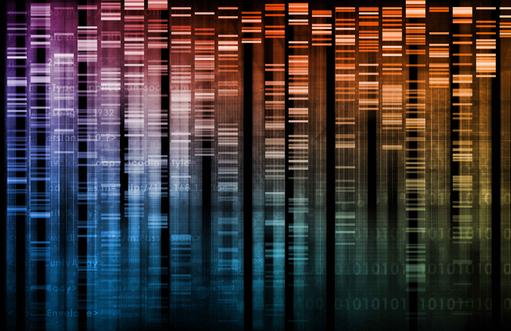
|
Directory:
Tags:
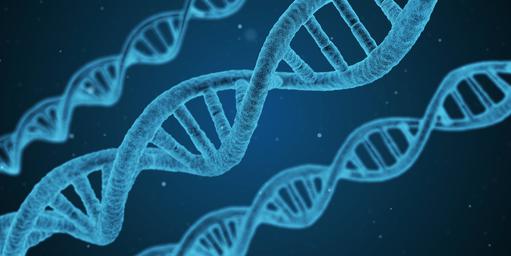
|
Directory:
Tags:
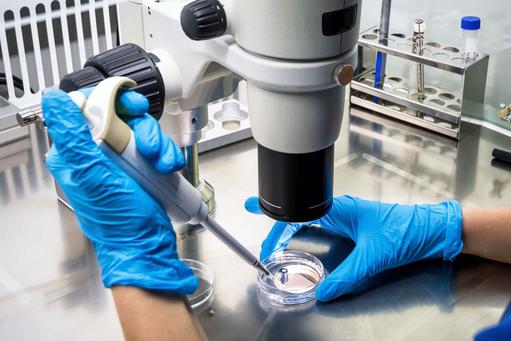
|

 HealthPad
HealthPad












